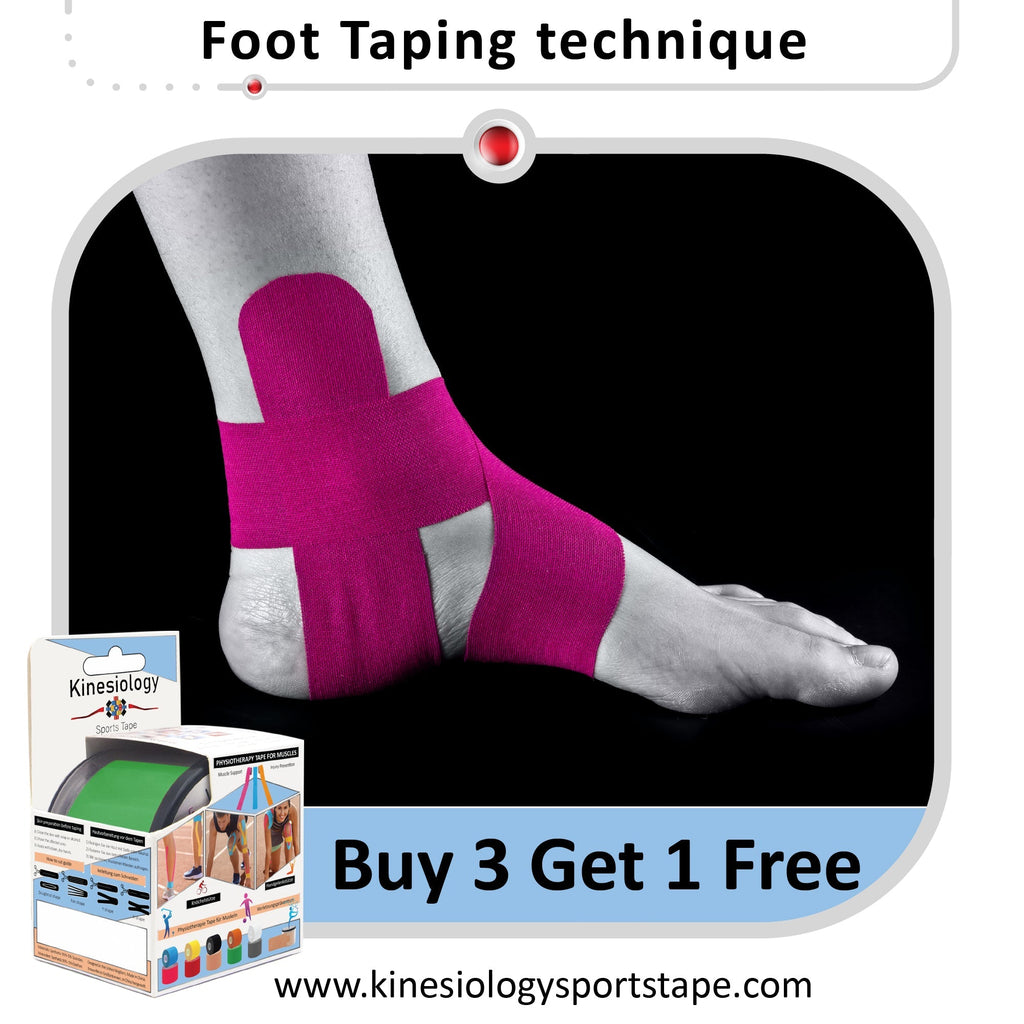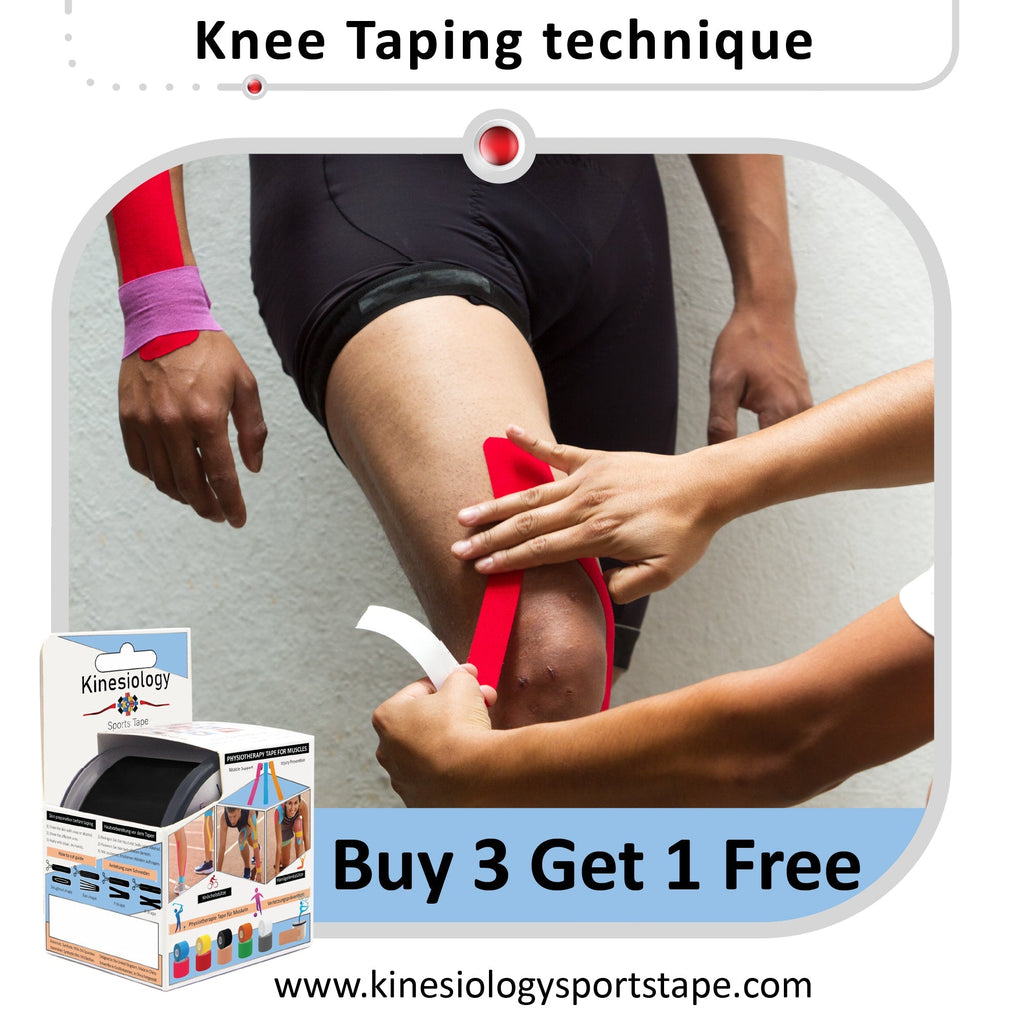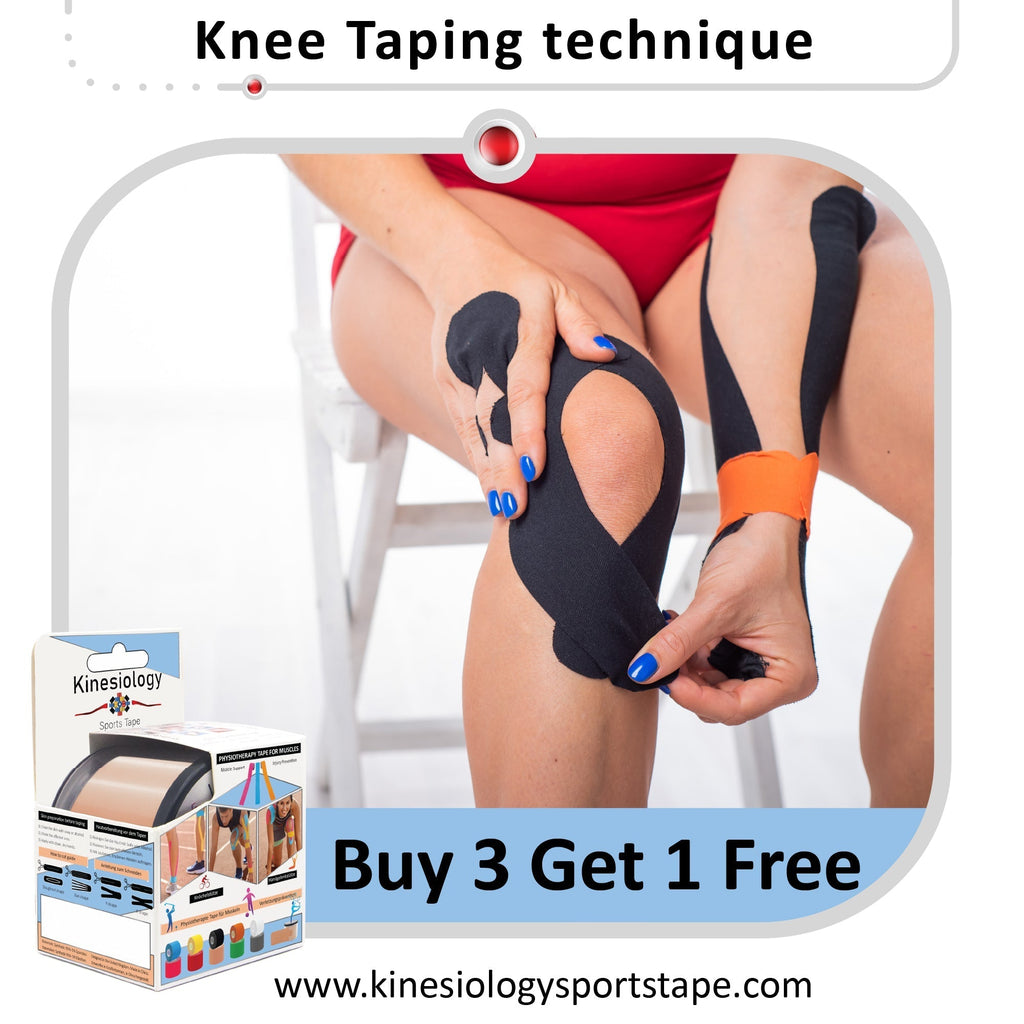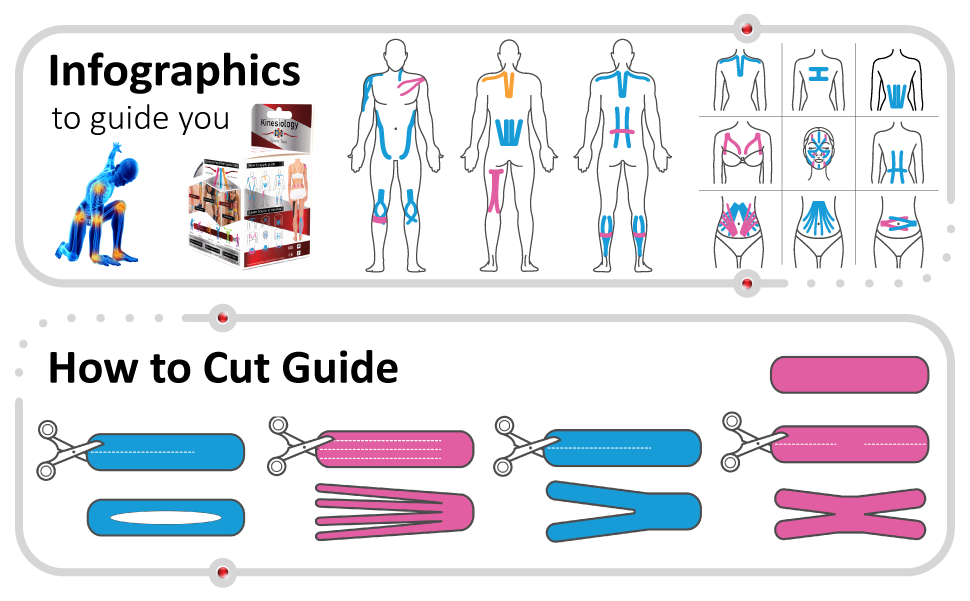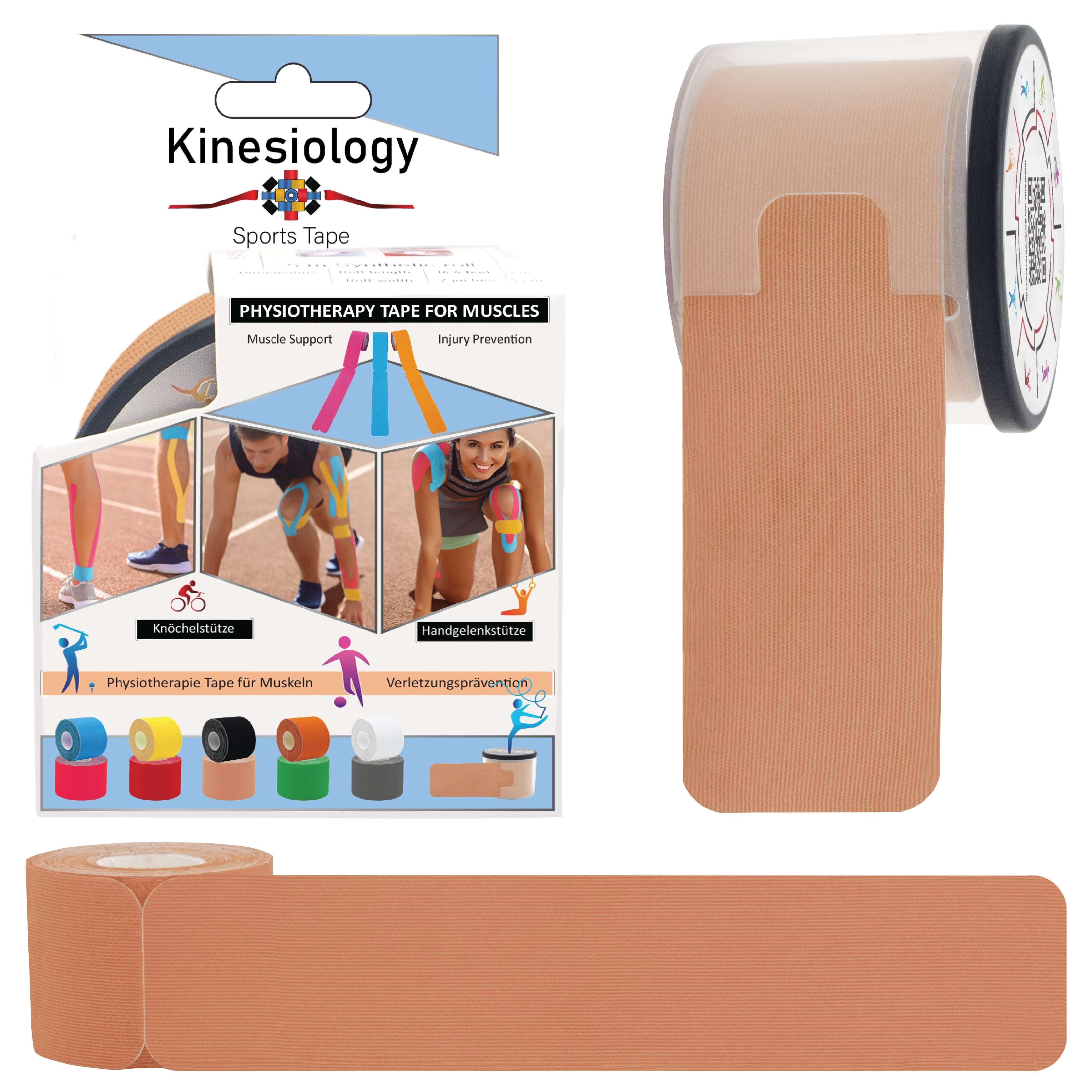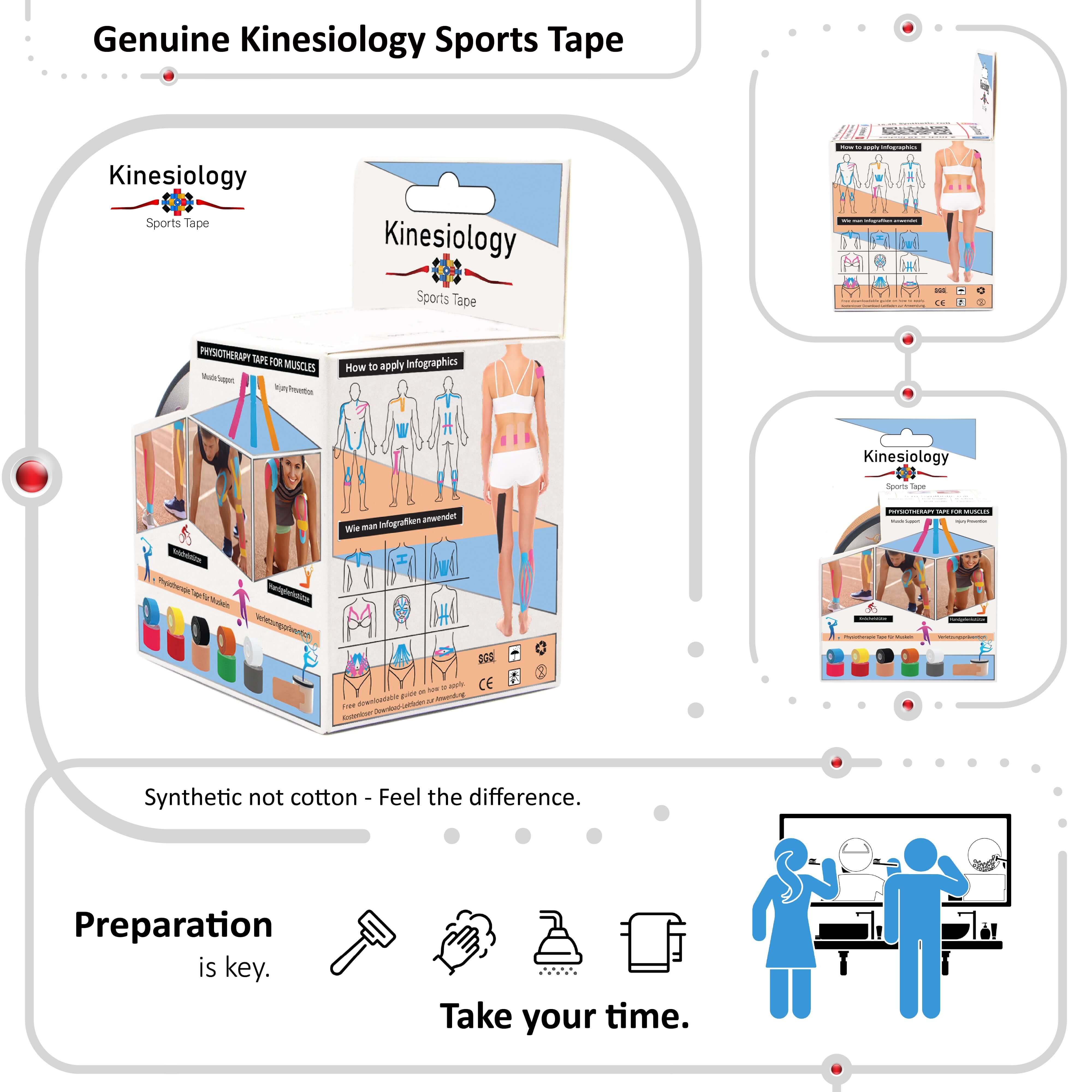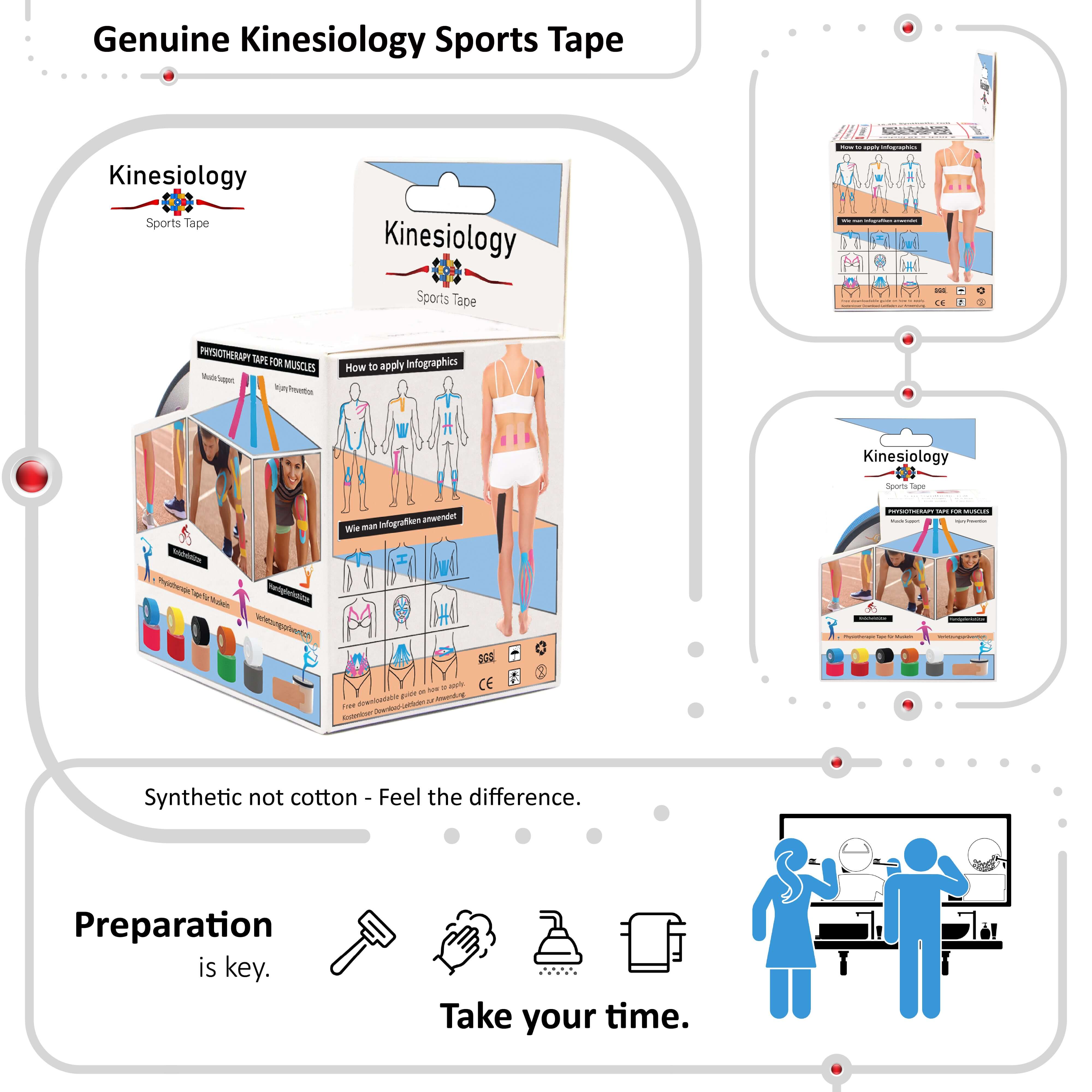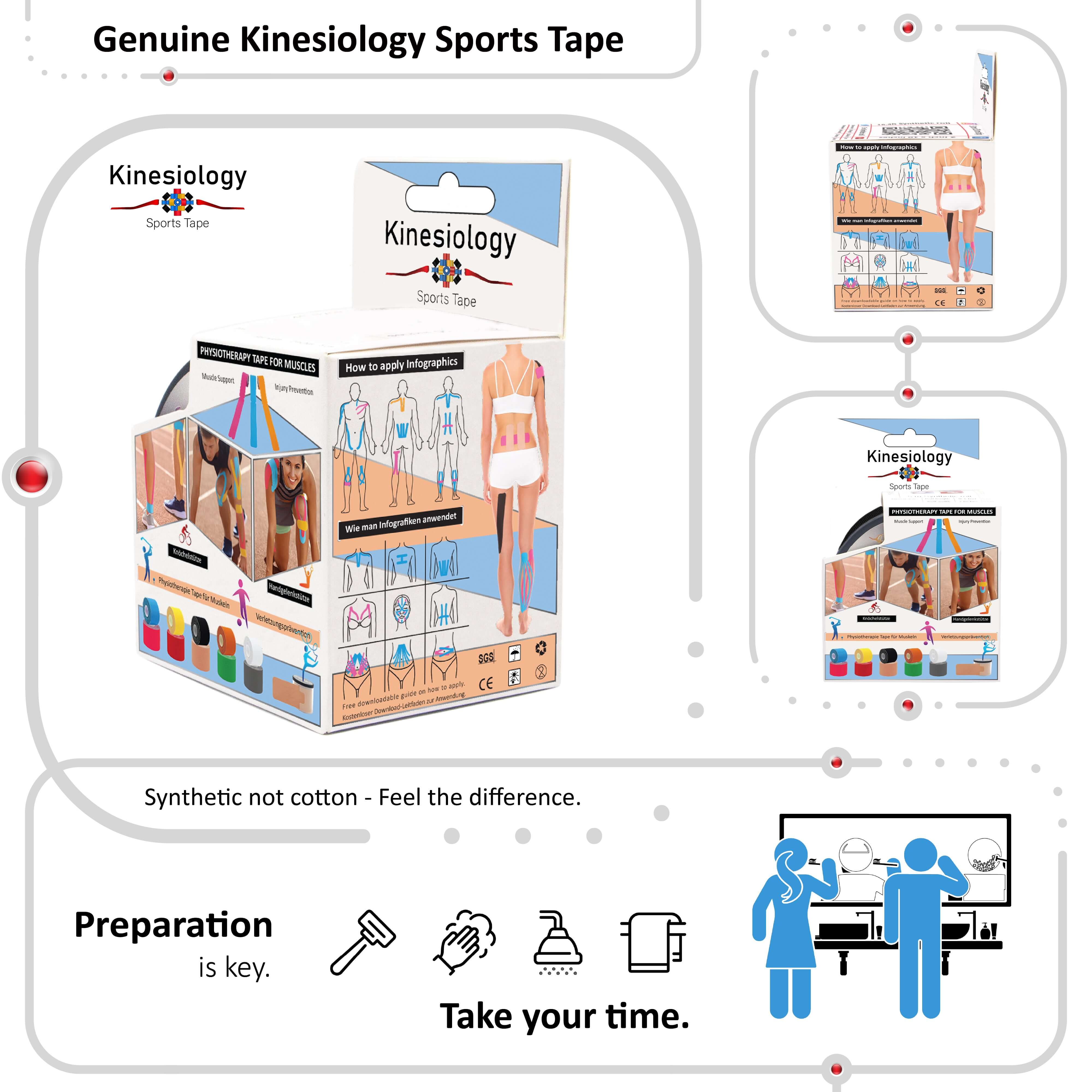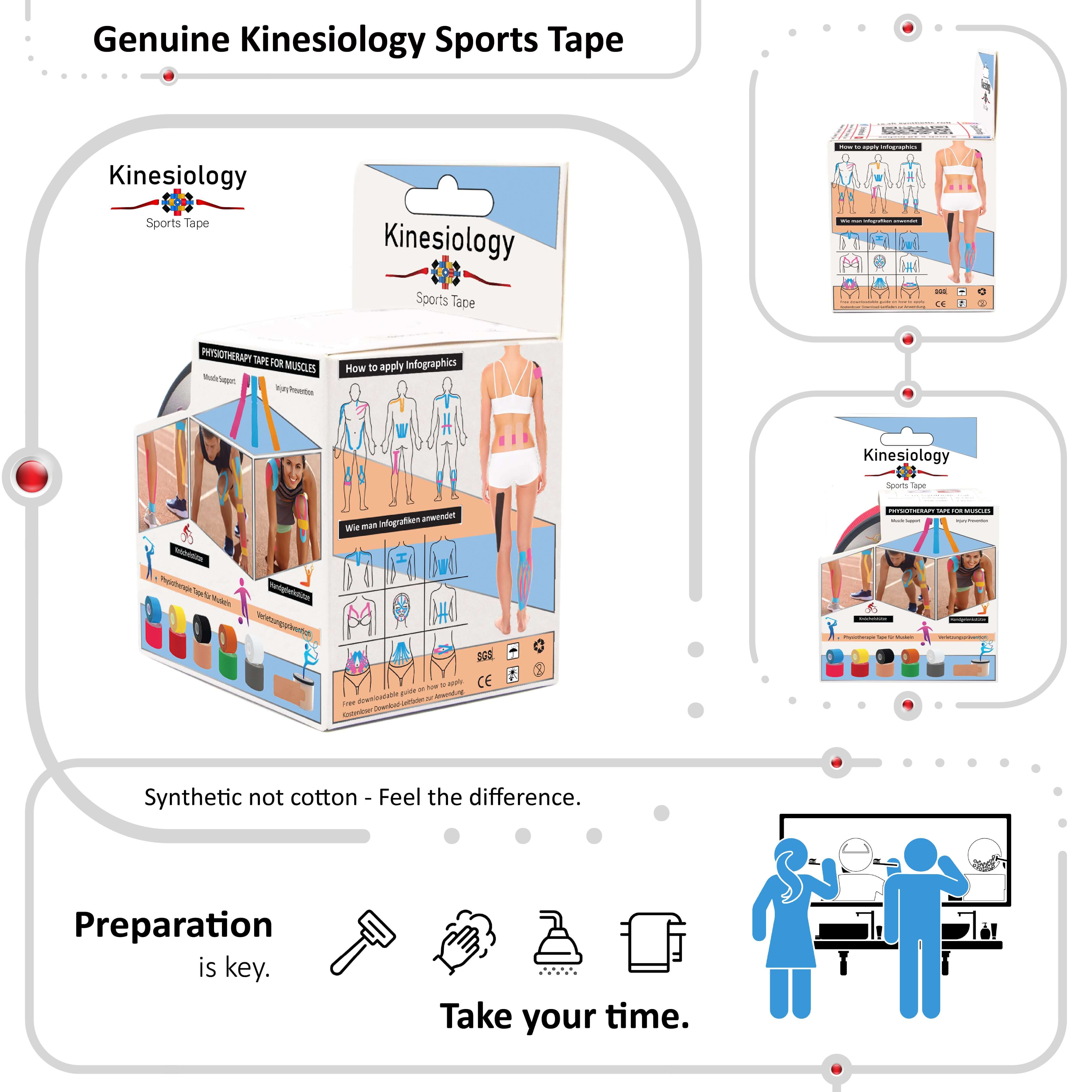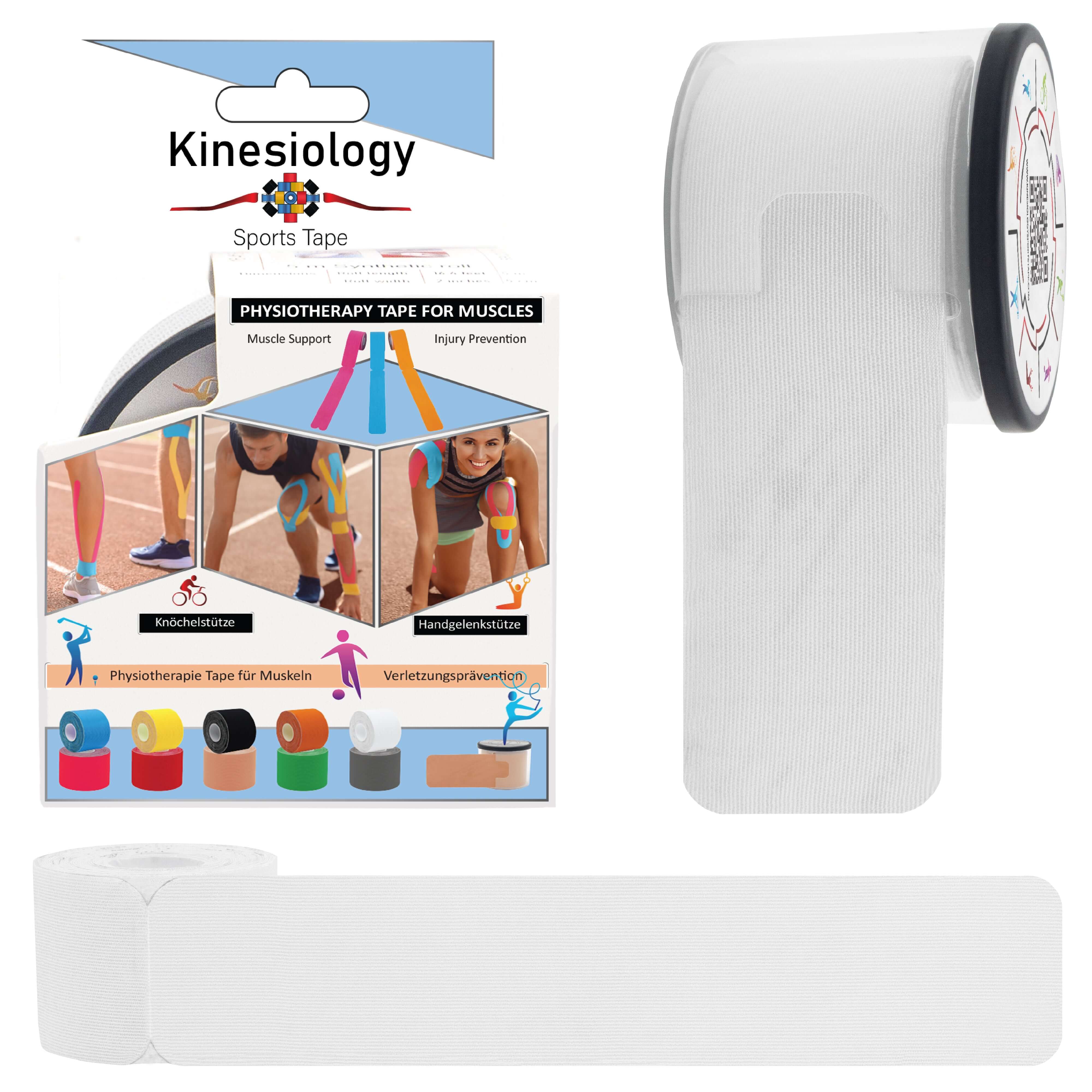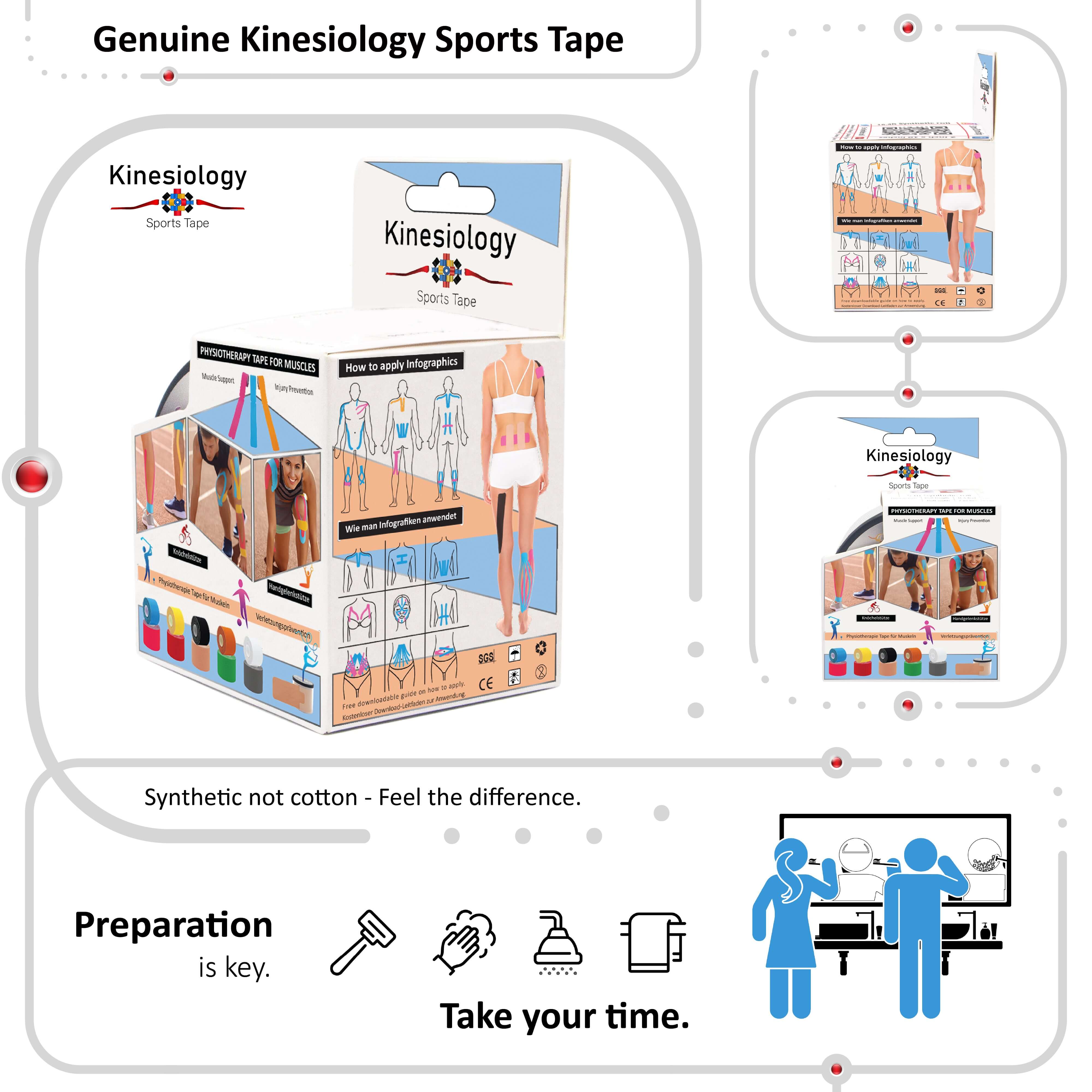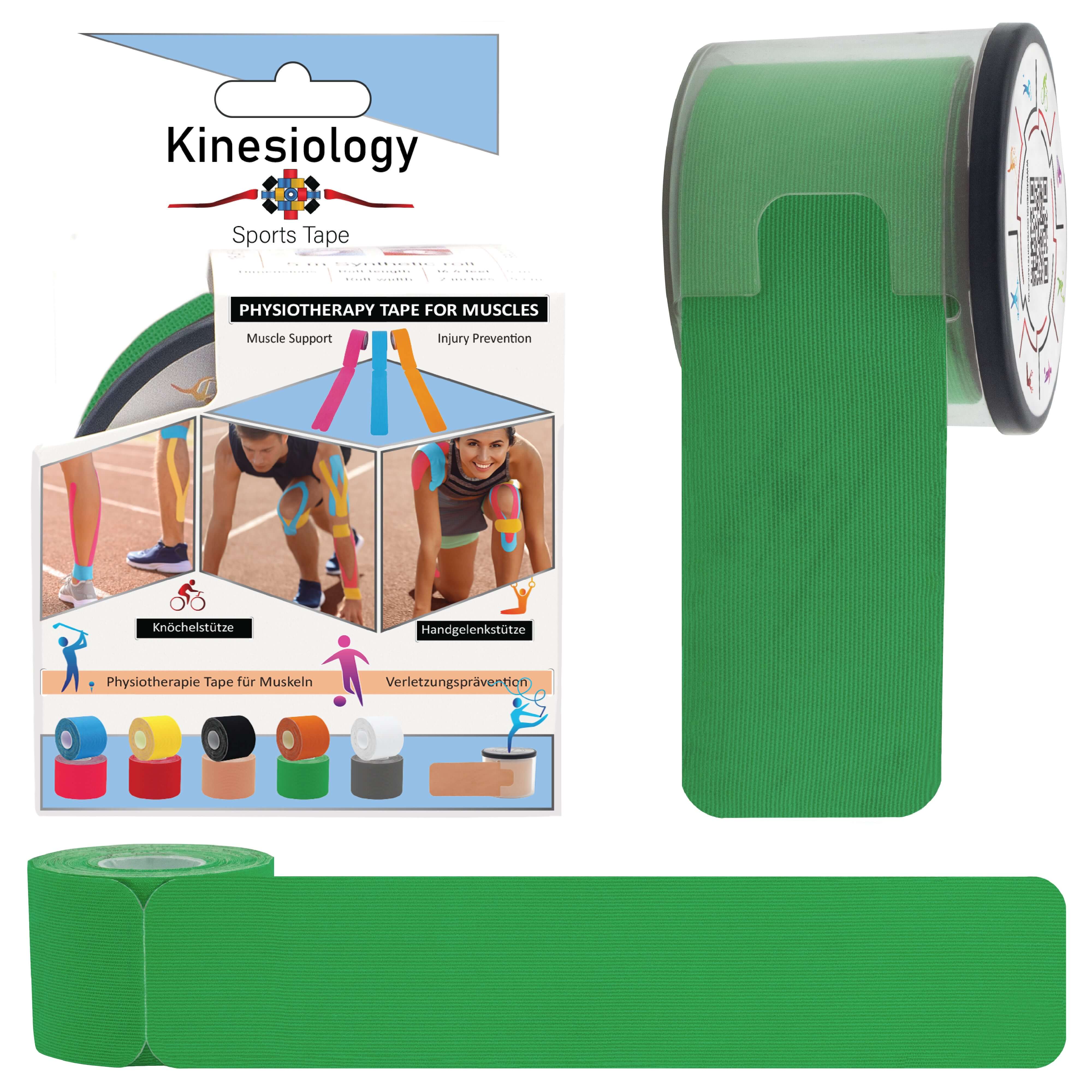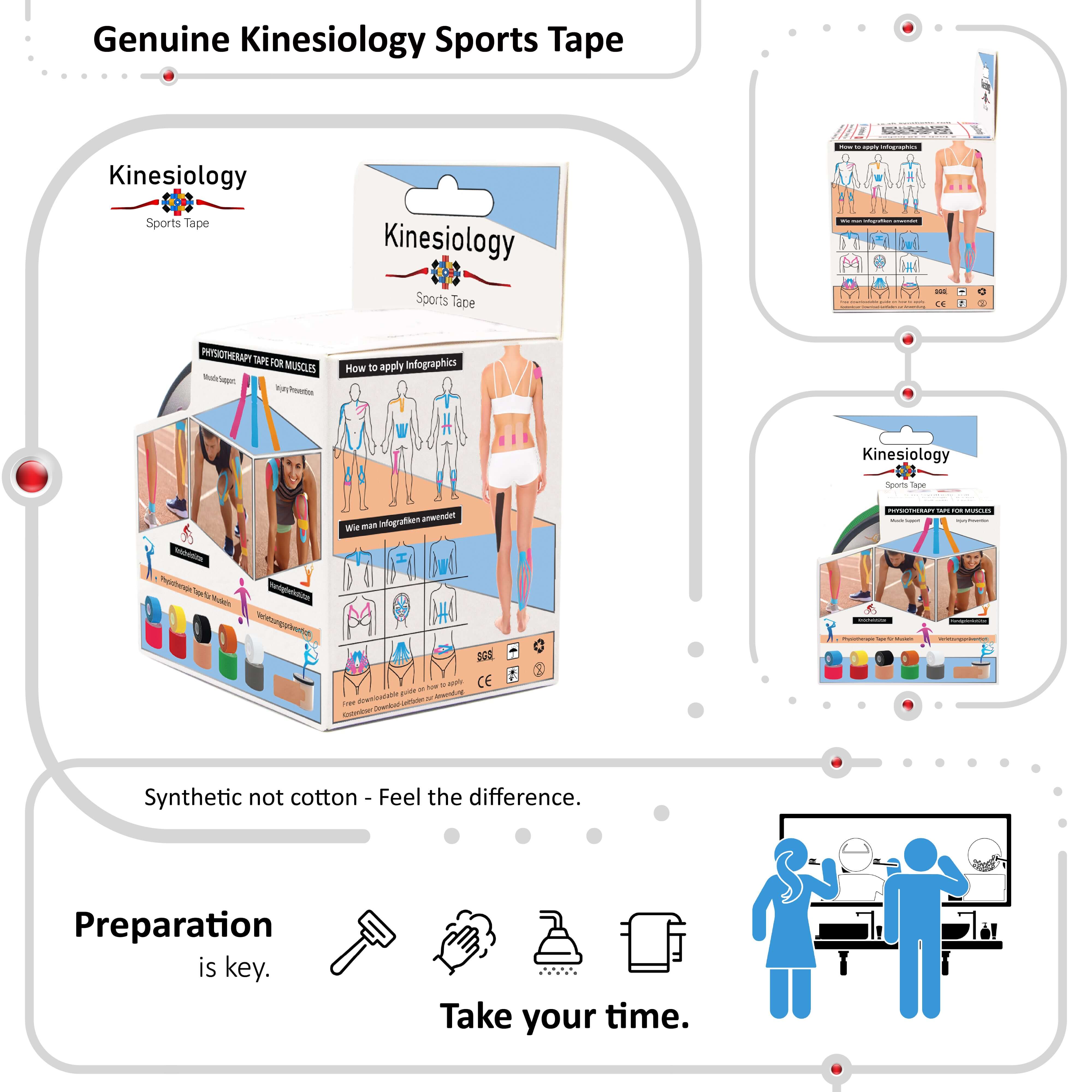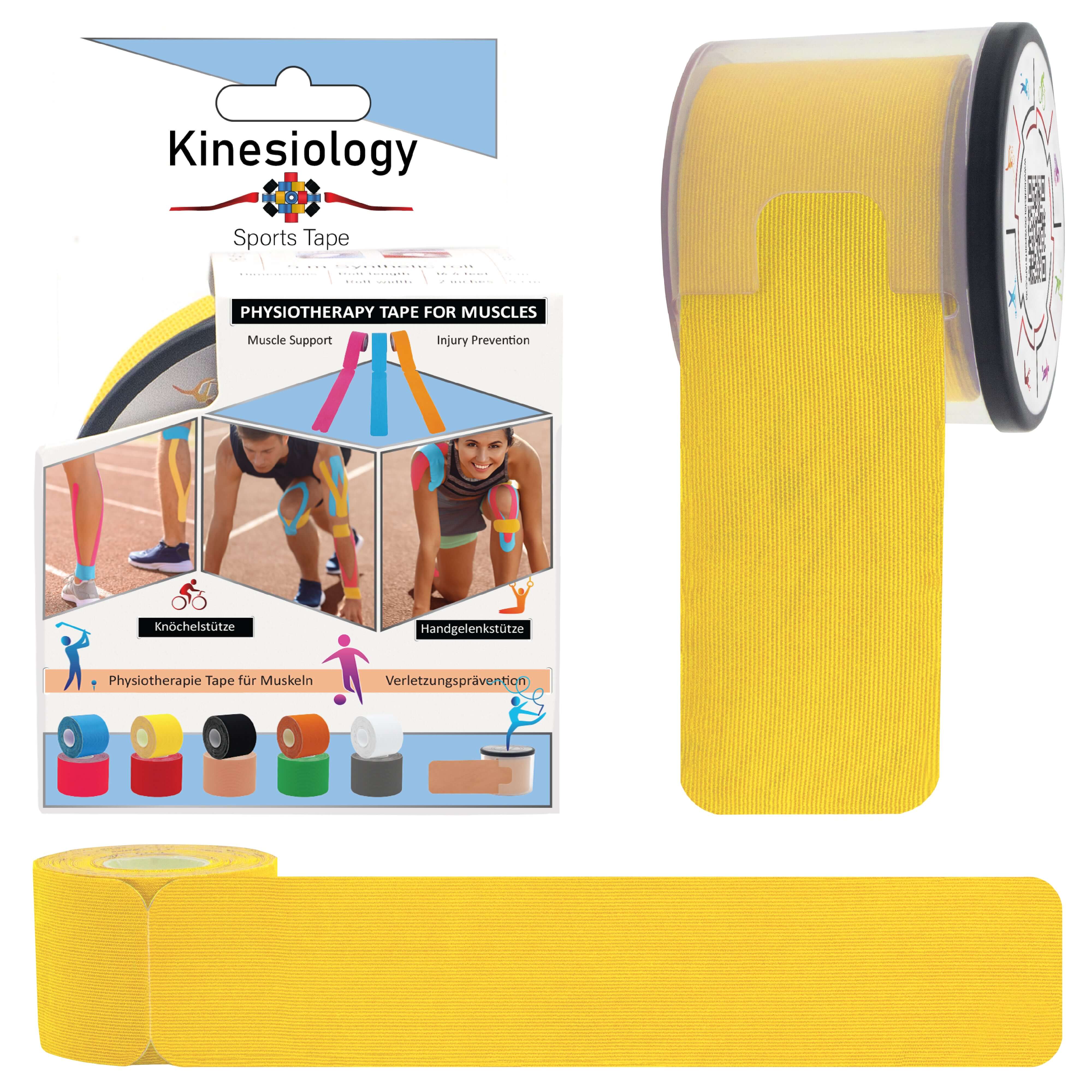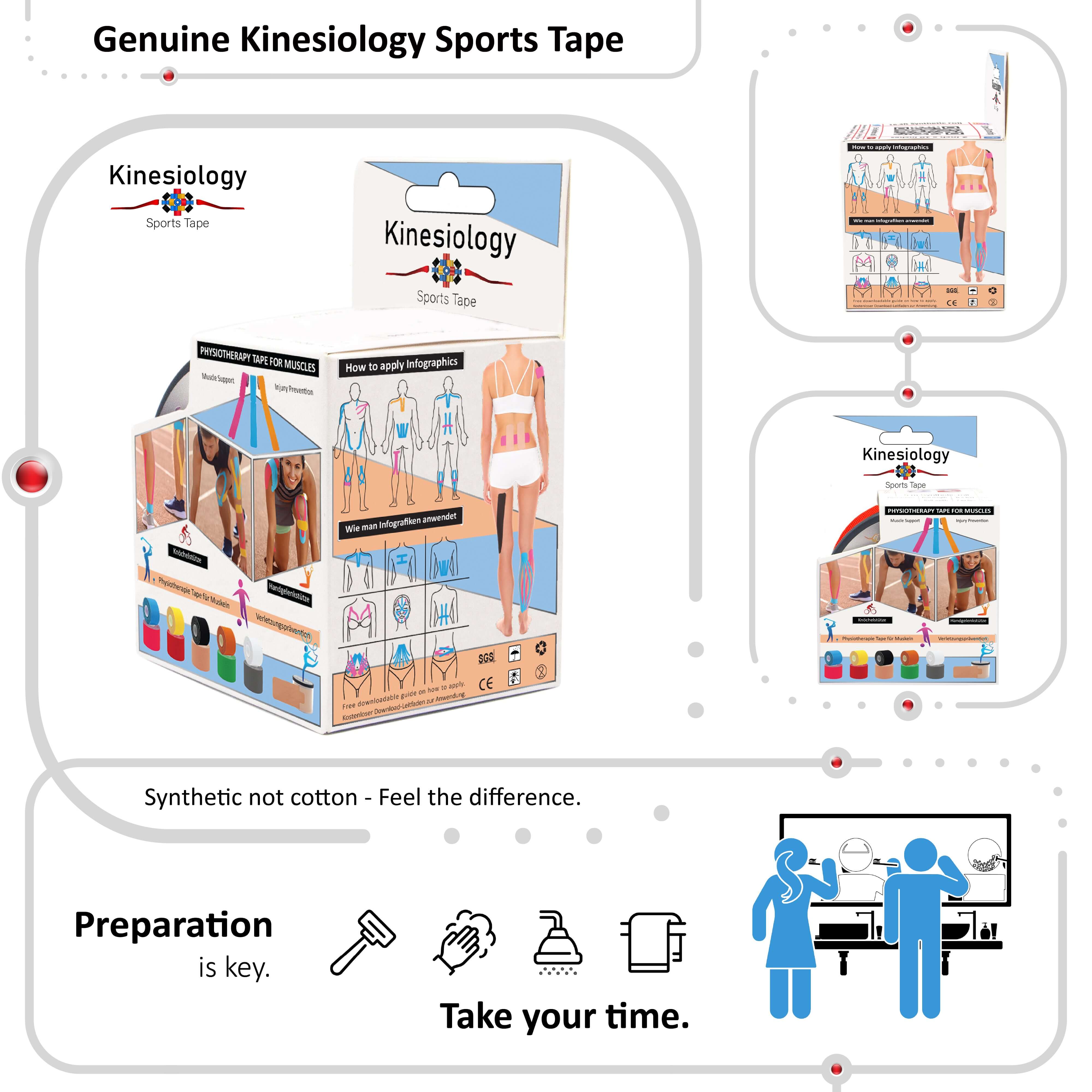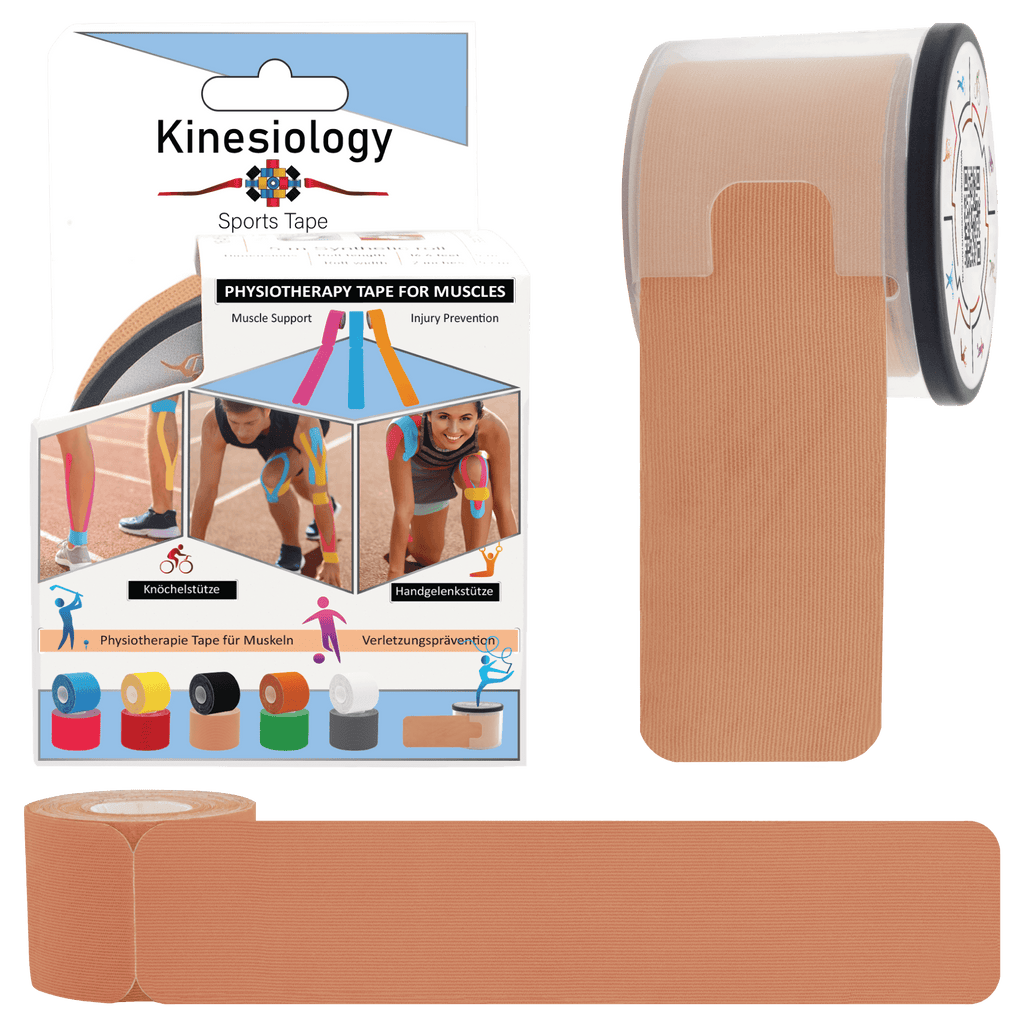
Does kinesiology tape work

Kinesiology tape, with its vibrant colors and growing presence on athletes, has sparked curiosity – does it truly work? This blog dives into the world of kinesiology tape, exploring the research behind its potential benefits and the factors influencing its effectiveness.
The Science Behind Kinesiology Tape:
While the exact mechanisms are still being explored, kinesiology tape's potential benefits may stem from several factors:
- Improved circulation: Kinesiology tape may create microscopic lifting of the skin, potentially enhancing blood flow to the taped area. Increased circulation can deliver oxygen and nutrients to promote healing and reduce pain.
- Reduced inflammation: Kinesiology tape application may influence the lymphatic system, which helps remove waste products and fluid build-up. This reduction in inflammation can potentially alleviate pain and discomfort.
- Pain gate theory: Kinesiology tape can provide sensory input to the skin and underlying tissues. This stimulation may activate the body's natural pain-relieving mechanisms, effectively reducing pain perception.
- Improved proprioception: Kinesiology tape can enhance body awareness by stimulating sensory receptors in the muscles and joints. This improved proprioception may lead to better movement patterns, potentially minimizing pain and injury risk.
Research and Effectiveness:
Studies on kinesiology tape's effectiveness have yielded mixed results. Some studies show promise for pain relief in conditions like lower back pain and knee pain, while others show minimal to no significant benefits. Here's what the research suggests:
- Pain relief: Some studies indicate kinesiology tape may offer some pain relief, particularly for conditions like muscle soreness and low back pain. However, the pain reduction may not be substantial compared to other treatment options.
- Performance enhancement: Research on kinesiology tape's impact on athletic performance is inconclusive. While some studies suggest potential benefits in areas like muscle fatigue and proprioception, the evidence is not yet definitive.
- Injury prevention: There is limited evidence to support the use of kinesiology tape solely for injury prevention.
Important Considerations:
- Placebo effect: The positive results some people experience with kinesiology tape may be partially due to the placebo effect – the belief that the tape is helping can lead to perceived pain reduction.
- Application technique: Proper application is crucial for maximizing kinesiology tape's effectiveness. Improper application may limit any potential benefits.
- Combined approach: Kinesiology tape is often used in conjunction with other therapies like physical therapy or massage. It's unlikely to be a standalone solution for pain management or injury prevention.
So, Does Kinesiology Tape Work?
The answer isn't a simple yes or no. Kinesiology tape may offer some benefits for pain relief and potentially improve proprioception, but the research is ongoing. Here are some key takeaways:
- It may be worth trying: If you're experiencing pain or discomfort, kinesiology tape may be a drug-free option to explore, particularly in conjunction with other therapies.
- Consult a healthcare professional: Discuss your specific condition and goals with a healthcare professional before using kinesiology tape. They can advise on its suitability and recommend proper application techniques.
- Listen to your body: If kinesiology tape doesn't seem to be helping or causes any discomfort, remove it and consult your healthcare professional.
The Final Word:
Kinesiology tape offers a potentially helpful tool in your pain management and recovery toolbox. By understanding the research, consulting a healthcare professional, and using proper application techniques, you can determine if kinesiology tape is right for you.

